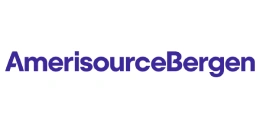Almond Processing Cost Model: Exploring Opportunities in Nutrition
_11zon.webp)
Almonds are nutrient-dense seeds obtained from the fruit of the Prunus dulcis tree, highly prized as a food item and source of industrial raw materials. Botanically drupes, almonds have a hard shell covering the edible kernel, which is rich in proteins, monounsaturated fat, fiber, vitamins, and minerals. The two main varieties are sweet almonds, eaten raw or processed into food items, and bitter almonds, used conventionally to extract oil and flavor after purging. The distinguishing features are mild nutty taste, excellent shelf life if kept properly, and very good compatibility with food as well as non-food uses. Almonds are processed in several steps like cleaning, shelling, blanching, roasting, or oil extraction, depending on the final purpose. Almonds are used in food and beverage, cosmetics, nutraceutical, pharmaceutical, and personal care markets. Their uses are attributed to their versatility, nutritional value, and consumer preference as a natural, plant-based protein. A unifying theme for almonds is sustainability, with efforts directed at water conservation, utilization of by-products, and carbon footprint minimization. The long-term outlook for almonds is favorable, aided by growing worldwide consumption of plant-based products and technological advancements in dairy-free almond products, snacks, and oils. The global almond market size reached 1.65 Million Tons in 2024. According to IMARC Group, the market is projected to reach 2.27 Million Tons by 2033, at a projected CAGR of 3.3% during 2025-2033. Strong global demand for healthy, plant-based foods drives the almond industry. Growing awareness among consumers of nutritional benefits especially almonds' contributions to heart health, weight control, and protein consumption drives consumption in developed countries and emerging nations. Increased uses in plant-based dairy alternatives, including almond milk, yogurt, and cheese, are key drivers to demand. Increasing popularity of snack foods and ready-to-eat items also hasten market growth. Demand from industry in cosmetics and personal care products, where almond oil is utilized for moisturizing and antioxidant functions, also plays an important role. Asia-Pacific per-capita incomes and diet globalization have increased almond demand beyond historical markets such as Europe and North America. Future trends involve precision farming to achieve greater yield and water use efficiency, blockchain traceability systems, and premiumizing value-added almond products. Competitive strengths include product diversity and robust consumer perception of almonds as a "superfood." Challenges, however, remain, such as water shortages in primary production areas, climate uncertainty, and tariffs fluctuations on global trade. Sustainability initiatives such as by-product valorization (almond hulls and shells converted into animal feed or bioenergy) are redefining the industry. Industry stakeholders are meeting this with eco-efficient processing technologies and diversified global procurement strategies.
Trending Insights on Almond: Latest News and Developments
- In February 2025, the Saudi Arabian Public Investment Fund ("PIF"), the sole owner of the Saudi Agricultural and Livestock Investment Company (SALIC), has agreed to pay $1.78 billion to boost its ownership position in Olam Agri from 35.4% to 80.01%. A call option to purchase the remaining 19.99% within three years is also granted to SALIC under the deal, which is contingent upon obtaining the required regulatory permissions.
- In November 2024, Blue Diamond announced the introduction of Almonds and More, an innovative addition to their mixed nut options. The new product is a combination of a mixed nut mixture and popular Blue Diamond flavours. There are three different flavour options: roasted honey, roasted sea salt, and smokehouse almonds.
Case Study on Cost Model of Almond Processing Plant:
One of our clients reached out to us to conduct a feasibility study for setting up a medium scale almond processing plant. We developed a comprehensive financial model for the setup and operation of a proposed almond processing plant in India. This plant is designed to produce 500 tons of almond annually.
Processing Flow: Commercial almond processing is done in consecutive operations to meet quality, safety, and appropriateness for varied end applications. The harvested almonds are first cleaned to eliminate leaves, stones, and debris through air classifiers and vibratory sieves. The nuts are next hulled and cracked mechanically with crackers and separators, producing kernels with minimal breakage. Subsequent processes are based on proposed uses: blanching is performed in hot water or steam to peel off skins, whereas roasting utilizes temperature-controlled heat treatment for flavor enhancement. For the production of almond oil, kernels are solvent-extracted or pressed and then refined. Intermediate processing like grading, sorting, and optical scanning is used to ensure consistency and defect removal of kernels. Cleaning and pasteurization operations are implemented to satisfy food safety laws, minimizing microbial load. Quality control involves moisture analysis, aflatoxin testing, and sensory analysis. Almonds are subsequently sized, cut, sliced, diced, or milled into flour, depending on consumer requirements. Packaging in protective materials, vacuum packs, nitrogen-flushed bags, or bulk containers is the last step to maintain freshness. These finished goods are shipped to food producers, retailers, and industrial users across the globe.
_11zon.webp)
Raw Material Required:
The basic raw materials required for almond processing include harvested nuts, packaging materials, and auxiliary supplies for blanching, roasting, or oil extraction. Key raw materials include:
- Almond Kernels
- Oil
- Sugar
- Salt
- Solvents
- Additives
Machineries Required:
- Pre-Processing & Cleaning (Almond Cleaner / Destoner)
- Grader / Sizer
- Magnetic Separator
- Washing & Drying Machine
- Almond Shelling Machine / Cracker
- De-Huller
- Air Classifier / Aspirator
- Shell Separator (Gravity/Roller Type)
- Kernels Post-Processing (Kernel Grading Machine
- Colour Sorter (Optical Sorting Machine)
- Metal Detector)
- Skin Removal & Blanching (Almond Blanching Machine, Peeling Machine, Dryer / Roaster)
- Almond Slicing Machine
- Almond Powder/Flour Grinder
- Almond Butter Mill
- Almond Milk Processing Unit
- Coating Machine
- Vacuum Packing Machine
- Supporting Machinery (Conveyors (Belt/Bucket)
- Storage Silos/Bins
- Weighing & Packaging Machines
Techno-Commercial Parameter:
- Capital Expenditure (CapEx): Capital expenditure in an almond processing plant encompasses various areas needed to set up and expand operations. The startup costs include land purchase, site preparation, and construction of hulling, shelling, and storage facilities. Core processing equipment includes cleaners, hullers, shellers, blanching equipment, roasting ovens, oil presses, optical sorters, and packaging equipment. Pasteurization, grading, and moisture control equipment is specialized and essential to maintain international food safety standards. Investments on storage silos, cold chain houses, and bulk handling systems also make a large part of CapEx. Facilities for water treatment plants, boilers, power backup, and HVAC systems for air-conditioned processing zones are required. Other costs are laboratory facilities for quality control, effluent treatment units for waste disposal, and automation or robotics for high-speed lines. Information technology infrastructure, such as enterprise resource planning (ERP) and traceability software, also enables effective operations. With growing focus on sustainability, buildings increasingly incorporate renewable energy integration, by-product valorization units, and resource-conserving designs. These investments in aggregate produce a strong, scalable platform for the production of almonds in several value-added categories.
- Operating Expenditure (OpEx): Operating expenses in an almond processing plant consist of recurrent expenses related to procurement, utilities, labor, and regulatory compliance. Raw almond purchase is the greatest expense, dependent on seasonal production, climatic fluctuations, and global trade policies. Utilities involve electricity for shelling, blanching, roasting, and packaging machinery, and water for blanching and cleaning. Labor involves remuneration, training, and labor management in the areas of production, quality control, and distribution. Machinery maintenance, spare parts purchases, and optical sorting system calibration are continuous operating requirements. Packaging expenses such as vacuum sealing, cartons, and bulk materials for storage also account for a considerable percentage of OpEx. Logistics and distribution expenses differ depending on domestic or export markets, and cold chain needs are an added expense to international transport. Food safety standards compliance, certifications, and aflatoxin and contaminants testing contribute to regulatory costs. Marketing, branding, and consumer outreach programs are strategic costs to differentiate in competitive markets. Sustainability-related expenses such as by-product recycling (hulls, shells), energy management, and water reuse systems become more critical. Proper OpEx control includes strategic almond sourcing, energy-saving technologies, and supply chain optimization to remain competitive. Furthermore, raw material cost ranges between 60-70%, packaging ranges between 10% to 15%, and all other costs ranges between 15-30% in the proposed plant.
- Profitability Analysis Year on Year Basis: We assisted our client in developing a detailed cost model, which projects steady growth, with revenue rising throughout the projected period. Moreover, gross profit margins lie between a range of 20-30%, and net profit lie between the range of 10-15% during the income projection years, highlighting strong financial viability and profitability.
Conclusion:
Our financial model for the almond processing plant was meticulously developed to meet the client’s objectives, providing an in-depth analysis of production costs, including raw materials, Processing, capital expenditure, and operational expenses. By addressing the specific requirements of producing 500 tons of almond annually, we successfully identified key cost drivers and projected profitability, considering market trends, inflation, and potential fluctuations in raw material prices. This comprehensive financial model equipped the client with valuable insights into strategic decision-making, demonstrating our commitment to delivering high-quality, client-focused solutions that ensure the long-term success of large-scale Processing ventures.
IMARC's Financial Model Expertise: Helping Our Clients Explore Industry Economics
IMARC is a global market research company that offers a wide range of services, including market entry and expansion, market entry and opportunity assessment, competitive intelligence and benchmarking, procurement research, pricing and cost research, regulatory approvals and licensing, factory setup, factory auditing, company incorporation, incubation services, recruitment services, and marketing and sales.
Under our factory setup services, we assist our clients in exploring the feasibility of their plants by providing comprehensive financial modeling. Additionally, we offer end-to-end consultation for setting up a plant in India or abroad. Our financial modeling includes an analysis of capital expenditure (CapEx) required to establish the Processing facility, covering costs such as land acquisition, building infrastructure, purchasing high-tech production equipment, and installation. Furthermore, the layout and design of the factory significantly influence operational efficiency, energy consumption, and labor productivity, all of which impact long-term operational expenditure (OpEx). So, every parameter is covered in the analysis.
At IMARC, we leverage our comprehensive market research expertise to support companies in every aspect of their business journey, from market entry and expansion to operational efficiency and innovation. By integrating our factory setup services with our deep knowledge of industry dynamics, we empower our clients to not only establish Processing facilities but also strategically position themselves in highly competitive markets. Our financial modeling and end-to-end consultation services ensure that clients can explore the feasibility of their plant setups while also gaining insights into competitors' strategies, technological advancements, and regulatory landscapes. This holistic approach enables our clients to make informed decisions, optimize their operations, and align with sustainable practices, ultimately driving long-term success and growth.
Our Clients
Contact Us
Have a question or need assistance?
Please complete the form with your inquiry or reach out to us at
Phone Number
+91-120-433-0800+1-201-971-6302
+44-753-714-6104










